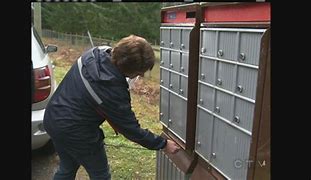Below is a review of the posts (on Facebook, LinkedIn, and Twitter) from the past week. You can check out the full posts by clicking on the links.

In the post on Sunday 11/27/2022 we asked: How can an employment lawyer help you with an employment discrimination claim? First, what is employment discrimination? When someone is treated less favorably than others with similar jobs because of personal traits (also called protected characteristics) including sex, age, religion, disability, ethnicity, sexual orientation, and more. There is also disparate impact discrimination; that is explained in the post. Employers can-not treat one group, or one person, better than others based on a protected characteristic (especially if both/all are doing the same job). Discrimination can manifest by more favorable treatment to one person or group or less favorable treatment to a person or group. Wrongful termination cases can also involve discrimination (as noted in the post). And if an employee believes there has been discrimination, what action should be taken? It depends on what any internal documents (contracts and handbooks) provide as well as the timing and applicable state or federal law – see the post for some examples. And whether or not you might be better off involving a lawyer can depend on the facts of the case, including those noted in the post. The lawyer will also be able to advise on any remedies available to the employee or defenses available to the employer.
TAKEAWAY: State and federal laws protect the rights and obligations of both employees and employers – each should know the law and get legal advice when necessary.

The post on Monday 11/28/2022 told us the EEOC sued Schuff Steel for discrimination – construction industry enforcement has been ramped up. The suit is about racial and national origin discrimination and alleges that a White plant manager used the N-word and roe as noted in the post. The EEOC alleges that the plant manager compared Black and Hispanic employees to excrement and stains in a toilet. Further allegations (sadly, there is more) are noted in the post. Still more? The EEOC also alleges that the manager forced the same employee to dance on command. Schuff Steel, the largest structural steel builder in the U.S., denied the allegations and said it had already investigated the incidents. More details as to what Schuff said are in the post.
TAKEAWAY: Train your employees as to what they can or cannot say and do; keep the EEOC from knocking at your door.

The post on Tuesday 11/29/2022 noted homeowners frustrated after US Postal Service, HOA refuse to fix damaged mailboxes in neighborhood. Some homeowners in the community say that neither their HOA nor the postal service will replace their mailboxes after a driver damaged them beyond repair. One long-time homeowner said the cluster box unit (CBU) that she shares with 10 other neighbors was destroyed (what happened is in the post and is not uncommon). So what do they have to do for mail? See the post. The owner asked for a copy of the contract with the association and was told of relevant provisions (i.e., who is responsible for locks and keys and who for the CBU itself – see the post). A representative for the HOA said that replacing the CBUs will cost nearly $1,500 and should be worked out between the homeowners and USPS.
TAKEAWAY: Know who has what responsibility in your condo or homeowners’ association. Consult a community association lawyer if you are not sure.

The post on Wednesday 11/30/2022 taught that an alleged attempt to change business’ demographics deemed direct evidence of discrimination (aka stray remarks can carry the day). Under the “stray remarks” doctrine, courts can decide that an employer’s expressions of frustration, or comments by a manager not involved in an adverse employment decision, are not persuasive evidence of discrimina-tion. However, a recent (unpublished) federal appellate court decision demonstrates the limitations of relying on the stray remarks doctrine to avoid liability for employ-ment discrimination. In EEOC v. Ryan’s Pointe Houston, LLC, the EEOC sued an employer on behalf of a pregnant property manager of Mexican descent (the allega-tions in the suit are noted in the post). The EEOC introduced testimony that the owners referred to Mexicans in derogatory terms and made other comments noted in the post, including how they felt about the subject employee. The trial court dismissed the suit on the basis that the claims were based on stray remarks and that the employer had demonstrated legitimate performance deficiencies with the manager’s work. On appeal the court disagreed, reversing and remanding for a jury trial. Relative to the stray remarks, the court said that they were direct evidence of discriminatory intent made by the owners who instructed the regional director to fire the manager. What the appeals court said about the performance issues is in the post.
TAKEAWAY: Don’t let your employees use or tolerate statements that demon-strate direct evidence of bias; they will come to light if and when adverse action is taken against the same person in the future.

In the post on Thursday 12/1/2022, we learned 5 tips to manage FMLA leave and PTO in the post-COVID-19 landscape. On its face, the FMLA may seem easy to grasp. Which employers are covered and which employees are protected is in the post. But that’s not all; there are wrinkles, what “12 weeks” actually means or sorting out the notice requirements or other things. And then throw in PTO policies … and COVID-19. Best practices for handling the inter-section of FMLA and PTO are still mostly the same as pre-pandemic, then consider the various state and local laws and long COVID. So, what should you know? First, the FMLA’s “serious health condition” definition is still key. Details about the definition are in the post. COVID-19 could fit the definition. Employers should note that there are multiple types of conditions that might qualify for FMLA leave, including those discussed in the post. The next tip is to know which leaves must run concurrently with FMLA leave. This can depend on state or local laws. Employers must know what absences or time off run concurrently and which do not. They are discussed in the post. State laws may supplement FMLA leave too. Three more tips/things to consider are in the post.
TAKEAWAY Know the law, whether you are an employee who needs time off or an employer administering the time off – and get advice from an employment lawyer.

The post on Friday 12/2/2022 said You bought an EV and want to install a charger in your condo (or house in an HOA); now what? This is becoming more of an issue in community associations. As an example, Joy had been living in her condo for eight years by the time she bought a Tesla Model 3 in 2018. Her parking spot wasn’t near any electricity meters, so installing her own EV charger would have required electricians to trench the ground at a cost of about $12,000—before the price of the charging system. Joy thought she could get by visiting Tesla Supercharger sites in her area. But in 2020 a neighbor also purchased a Tesla and reached out to Joy about installing a community charger, which meant getting the HOA’s approval. So what happened after that? See the post. Ah, but the fairy tale doesn’t end there. What followed was a year and a half of snags and setbacks trying to navigate the power company’s approval, state law, the intricacies of the HOA (including where to put the chargers), and finding installers who fit the budget. More than a year after HOA approval, the community chargers still aren’t installed. Joy’s story is not unique. Old buildings (or developments) were not designed for EVs. And the area’s electric grid also may not be able to handle EVs and chargers. Statistics show that about 80% of EV charging happens at home, so installation (and grid support) are imperative. And in older HOA communities there are many questions including board buy-in and architectural logistics such as whether the current electrical infrastructure can handle the load of multiple charging cars and more as listed in the post, and, perhaps topping the list, is it ADA-compliant? How a community installs EV chargers depends on the type residents are looking for—which can vary as noted in the post. Community chargers can also be an income opportunity that helps to offset the cost. Many of the things a Board must consider are discussed in the post.
TAKEAWAY: More and more people are buying EVs, meaning the need for chargers in community associations grows – discuss purchase and implementation with a community association lawyer.

Finally, in the post yesterday 12/3/2022, we suggested you know your rights: EEOC issues new workplace discrimination poster. The original poster was issued October 19, then revised and reissued a day later. The new poster is titled “Know Your Rights” and replaces the old one titled “Equal Employment Opportunity Is The Law”. It’s not just aesthetics; there are a few changes. There is new language explaining the coverage of sex discrimination (as including sexual orientation, gender identity and pregnancy) and more on how to file a charge (as noted in the post). And what do employers need to do now? Put the poster in a conspicuous location in the workplace where notices to applicants and employees are customarily posted. And digital or electronic posting? See the post.
TAKEAWAY: Make sure you have the most up to date poster and that it is displayed properly.

 York, Pennsylvania 17403
York, Pennsylvania 17403